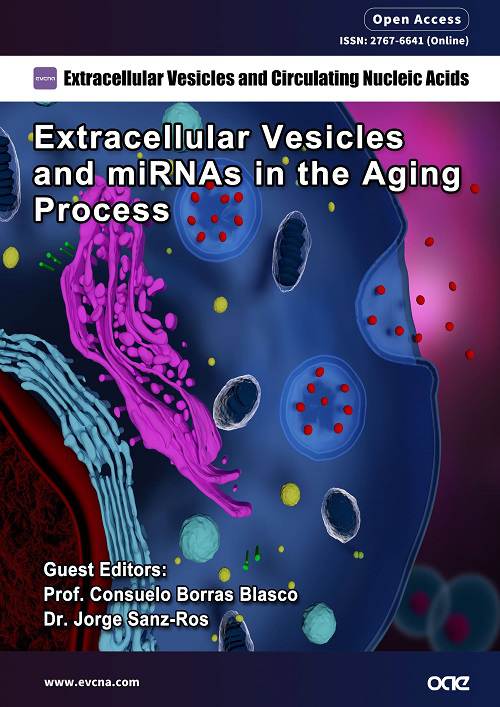
Topic: Extracellular Vesicles and miRNAs in the Aging Process
A Special Issue of Extracellular Vesicles and Circulating Nucleic Acids
ISSN 2767-6641 (Online)
Submission deadline: 30 Sep 2023
Guest Editor(s)
Consuelo Borras Blasco
Professor, INCLIVA Health Research Institute, Universidad de Valencia, Valencia, Spain.
Special Issue Introduction
Aging is characterized by molecular and cellular traits that are drivers of this process and lead to tissue dysfunction and an increased risk of death. In recent studies, extracellular vesicles (EVs) and miRNAs from different types of cells have been described as factors that can interfere with these aging-associated processes, such as intercellular communication, cellular senescence, oxidative stress, or metabolism, with benefits in the function of old organisms. On the other hand, aging is characterized by a loss of regenerative capacity. Stem cells lose the ability to regenerate properly, both in basal conditions and after damage, with fewer potential divisions over a longer period. In contrast, EVs from several types of stem cells can improve regeneration in different tissues after induced damage, both in vivo and in vitro.
miRNAs are small non-coding RNAs present in EVs and have been described as important factors contributing to the effect of EVs in the communication between cells. There is a dysregulation of miRNA biogenesis with aging, and miRNAs contained in EVs are proposed as potential modulators of age-related processes.
This Special Issue welcomes studies covering the following topics:
● Role of EVs in aging-related processes;
● EVs as a regenerative tool in aging;
● Potential of EVs on targeting aging and age-related diseases;
● Role of miRNAs in the aging process.
miRNAs are small non-coding RNAs present in EVs and have been described as important factors contributing to the effect of EVs in the communication between cells. There is a dysregulation of miRNA biogenesis with aging, and miRNAs contained in EVs are proposed as potential modulators of age-related processes.
This Special Issue welcomes studies covering the following topics:
● Role of EVs in aging-related processes;
● EVs as a regenerative tool in aging;
● Potential of EVs on targeting aging and age-related diseases;
● Role of miRNAs in the aging process.
Submission Deadline
30 Sep 2023
Submission Information
For Author Instructions, please refer to https://www.oaepublish.com/evcna/author_instructions
For Online Submission, please login at https://oaemesas.com/login?JournalId=evcna&SpecialIssueId=evcna221011
Submission Deadline: 30 Sep 2023
Contacts: Paula Li, Assistant Editor, paula@oaepublish.com






